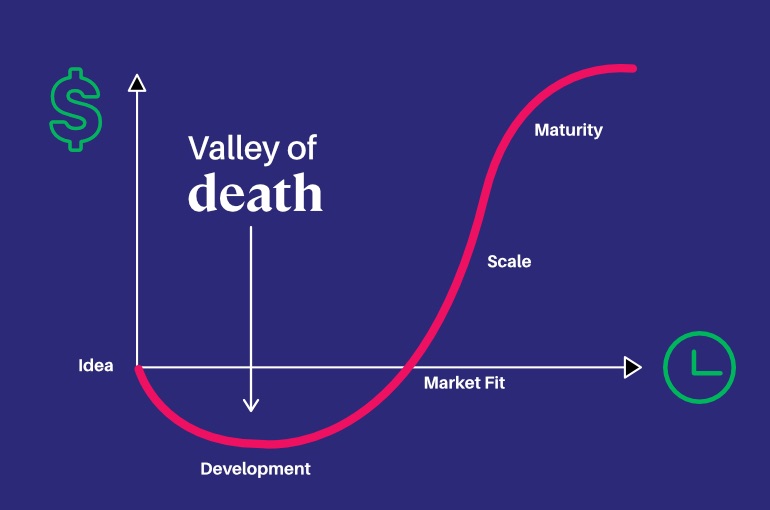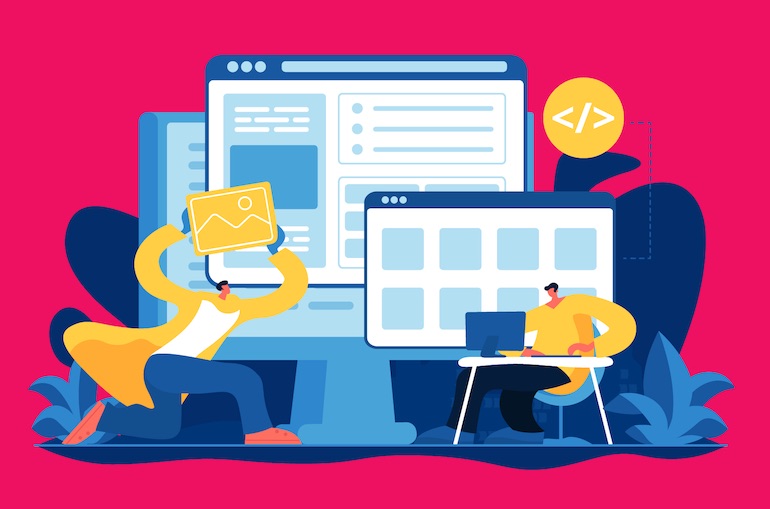Building products is exciting and rewarding. But there’s a flip side. What success stories and inspirational posts don’t cover is that product development is painful, and often, even the best-laid plans fail.
Sure, it’s great when you have thatahamoment and everything you read validates your idea and market fit. Your possibilities will seem limitless.
But like every new initiative, your idea will face the ultimate test—the Valley of Death that very few businesses and products manage to surpass. TheValley of Death, as it is often known in the startup community, is an early period of negative cash flow that new products or ideas often have to surpass, before wider adoption and revenues kick in.
As a business owner with anShopify Expert agency, I’ve always wanted to diversify our revenues with Shopify microSaaS applications. Ecommerce apps excite me because of their real-world business impact, so I’ve spent many hours obsessing over solutions that business owners might find useful.

Naturally, this daily obsession peaked with my first product journey and brought me face to face with the Valley of Death. I’ve been there and back again, so here are my five big learnings from the road.
Build apps for Shopify merchants
Whether you want to build apps for the Shopify App Store, offer custom app development services, or are looking for ways to grow your user base, the Shopify Partner Program will set you up for success. Join for free and access educational resources, developer preview environments, and recurring revenue share opportunities.
Sign upLesson 1: Delegate, delegate, delegate
This is timeless advice for not just product owners, but all entrepreneurs.
Are you obsessed with your product idea? Can you visualize theexact productyou want to build? I’m sure you can. It’s your idea, after all.
You’ve spent hours studying the market, existing solutions, competitor apps, and exciting tech stacks that you can use—so who else can imagine how your product should be, right?
Wrong. This will lead you down a slippery slope of trying to do (or micromanage) everything.
Take it from me, it doesn’t work. I’ve spent countless hours studying new technologies, signing up for tutorials and Udemy courses, learning how to make abusiness plan, and understanding pricing strategies—hours that I could have spent working with domain experts.
When I was finally done, I:
- Didn’t achieve my desired level of expertise in multiple domains
- Faced additional anxiety because my progress was super slow
When in doubt, delegate.
"Build relationships with partners to make up for technical or marketing skills you lack."
Consult other makers, developers, marketers, business folks, and product owners to save yourself months of learning. Build relationships with partners to make up for technical or marketing skills you lack. Spend time only on the things that you do best, and build an MVP.
You might also like:Building Shopify Apps: 9 App Developers Share Their Experiences.
Lesson 2: Launch an imperfect MVP fast
Your product will never be perfect. Not initially, anyway.
Learn when you should stop building prototypes and take your idea to market for real-world validation. And yes, it’s okay if your design and engineering goals haven’t been met.
AirBnB was launched as a barebones website that offered accommodation to conference attendees in San Francisco. The founders famously couldn’t afford their apartment rent, so they turned theirloft into a lodging spaceand put up pictures on a website.
So when I say build an imperfect minimum viable product (MVP), go AirBnB on your idea.
While prototypes are great, it’s hard to get real feedback from users unless they’re completely invested in your product. Prototypes are limited by your subset of users and the test environment, while an MVP, even in its most basic form, gives insights from high-intent users in a real environment.
我想发布我的产品的最好的版本and lost time building prototypes and trying to get all my functionalities in place, without any feedback or user validation.
It’s hard to predict how users will react to your app and interact with it, so save the final version for later. Build an imperfect MVP that helps you kick start the process.
You might also like:User Testing Your Shopify App: Public App Use Cases You Should Test.
Lesson 3: Your idea isn’t completely original, and that’s okay

The art of storytelling has been described asone big telephone game.
App ideas are not about you and howoriginalyou are. Don’t chase the chimera of wildly innovative ideas and instead, focus on what your users need and what you know best.
"Don’t chase the chimera of wildly innovative ideas and instead, focus on what your users need and what you know best."
在插入一个惯例苹果referen的风险ce, Macintosh’s GUI wasn’t a wildly original idea when it first launched. XEROX PARC hadmade great progresswith user interfaces, and the ingenuity of Steve Jobs was in how he brought complex and expensive technologies from the confines of a lab to a consumer market. The Apple story stresses on the importance of bringing an idea to market vs. obsessing over its unique proposition.
The Shopify App Store is at once innovative and challenging. Over the years, an amazing and dedicated community of makers has built countless apps for every foreseeable category.
I spent weeks trying to find gaps in the system that I could exploit, and came up with nothing. What I should have been doing isrefine and simplify existing solutions. Quite a few ecommerce apps are buggy, slow, and come with a significant payload.
In hindsight, I should have picked a key category that I was already familiar with and built a better mousetrap. But my penchant for originality made the job harder.
You might also like:SidePanda: From Indie Makers to SaaS Business Owners.
Lesson 4: Build in public for better traction
My biggest mistake was that I was building in a bubble.Always go public!
Building products in public (and failing) unlocks diverse perspectives, opens up relationships with your extended network, and helps you refine your product in more ways than one.
When theShopify App Challengelaunched in 2020, I started building a real-time delivery application with my super enthusiastic team. One of my biggest regrets is not going public with my idea and engaging like-minded people on social channels.
For instance, it’s priceless to get early feedback from peers and potential customers. We didn’t seek any feedback on our idea, and when Shopify announced the winning entries—we realized that delivery apps likeAlpacawere way ahead of ours in its execution.
Secondly, marketing matters, but not just in the way that you think it does. Building apps publicly online is a great way to:
- Engage people
- Grow an organic audience with traction
- Strengthen your personal profile
- Create trust through transparency
- Share a behind-the-scenes look of your journey
Indiehackers, Product Hunt, Makerlog, and Twitter are powerful platforms if you know how to wield them well, but you don’t have to do this yourself.
Find a web-savvy and super conversational partner who can help engage audiences, ask the right questions, listen to ideas and feedback, and help you amplify your vision from day one.
Oh, and write about your journey on your own blog or on social media. This all helps to document the progress you’re making along your product development journey. We plan to do all of this differently on our next product attempt.
You might also like:How to Build a Shopify App: How to Validate Your App Idea.
Lesson 5: Fail fast, and fail early
Sometimes, despite your best efforts, ideas don’t stick. Apps fail to gain traction. The app world is brutal and impartial, and you’re highly likely to realize this.
Failure is a big part of the development journey, so embrace it.
"Failure is a big part of the development journey, so embrace it."
In hindsight, I have greater clarity on where our idea for the App Challenge went wrong. We didn’t spend time talking to our clients to find their exact issues with real time deliveries and fleet management. We focussed too much on technology and too little on solving essential problems. And finally, we didn’t involve external stakeholders or experts, and tried to build a product on personal assumptions.
The good part was that we failed early, so we could regroup and rethink our strategy.
Stay objective about what’s working, learn why things are going wrong, and take tough feedback from users positively without letting it affect your morale.
You might also like:Beyond the Build: What We Learned From Top SaaS Founders.
Learn from your setbacks
You can minimize your chances of failure and survive the Valley Of Death with the right plan. But regardless of your first outcome, you can always learn from your setbacks and mistakes.
Apart from building a great product, use your social channels to let people know exactly what problem you’re solving. Create and implement a structuredmarketing plan, and build intelligent customer support with easy videos and tutorials to answer common questions and save time—but know that it’s a long journey.
It might take you years to reach your MRR or ARR targets after you launch your product, so patience is a virtue you’d do well to cultivate. Listen to your instincts and ask for feedback from trusted advisors and the community. If you feel that your idea isn’t working, chances are that you’re right. Learn to quit when you’re ahead.
I did! I embraced the lessons from my previous journey and have since moved on to build a new product that I’m super excited about. I’m having great conversations with customers about our feature sets to validate my ideas. And now I’m working with seasoned technology consultants, who bring fresh perspectives and an innate understanding of customer needs. I took the time to review what wasn’t working so we could do things differently.
We still face an uphill challenge, but this time, I’m better prepared and ready to go!
What was one of your biggest challenges building your app, and how did you overcome it?Let us know in the comments below!
